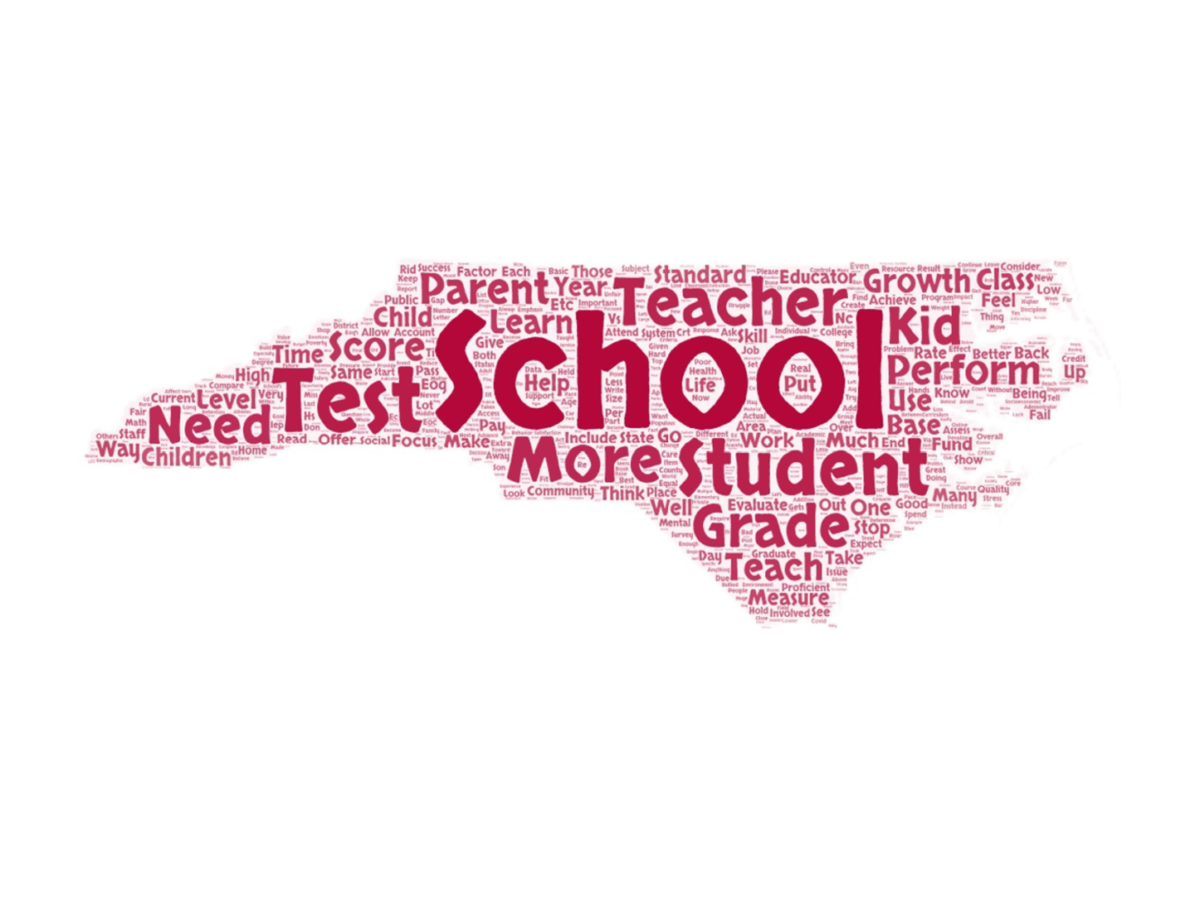

Share this story
- Work on a new school performance grade model continued during a DPI advisory group meeting. The plan is to have a new policy recommendation by January.
- "We are getting close to having a recommendation of some potential model components," said @MichaelMaherPhD during a recent accountability advisory group meeting.
|
|
An advisory group working on North Carolina’s school performance grade redesign continued its work today, including a discussion of which performance indicators could replace the current system.
The Department of Public Instruction (DPI) formed the group earlier this year to consider a change to the current school performance grade system ahead of the long session of the General Assembly in January. Lawmakers have the ultimate say on revamping the model.
The current school grading system is weighted 80% by academic performance and 20% by academic growth.
“We are getting close to having a recommendation of some potential model components,” said DPI Deputy Superintendent Michael Maher.
The current plan is to continue work on refining the indicators that might make up a new school performance grade model and then have a policy recommendation prepared in January.
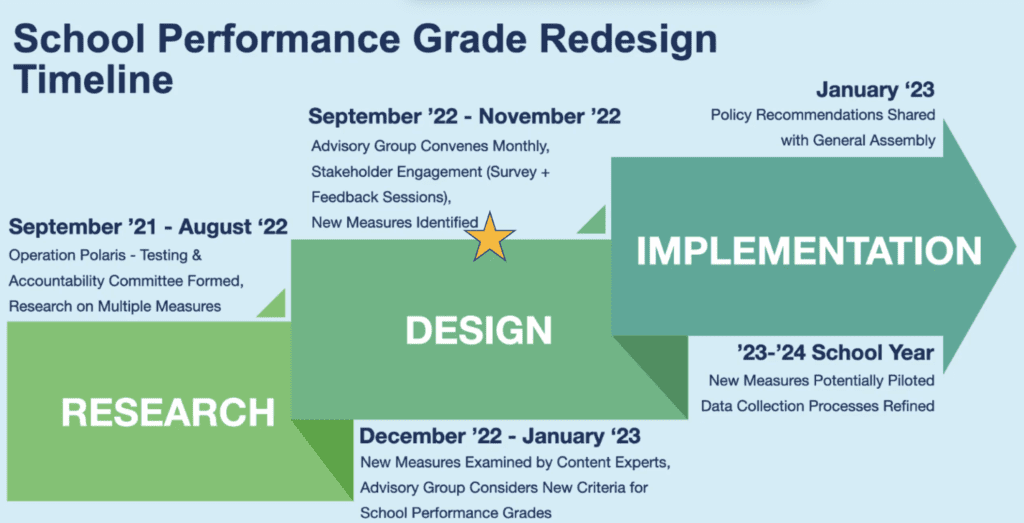

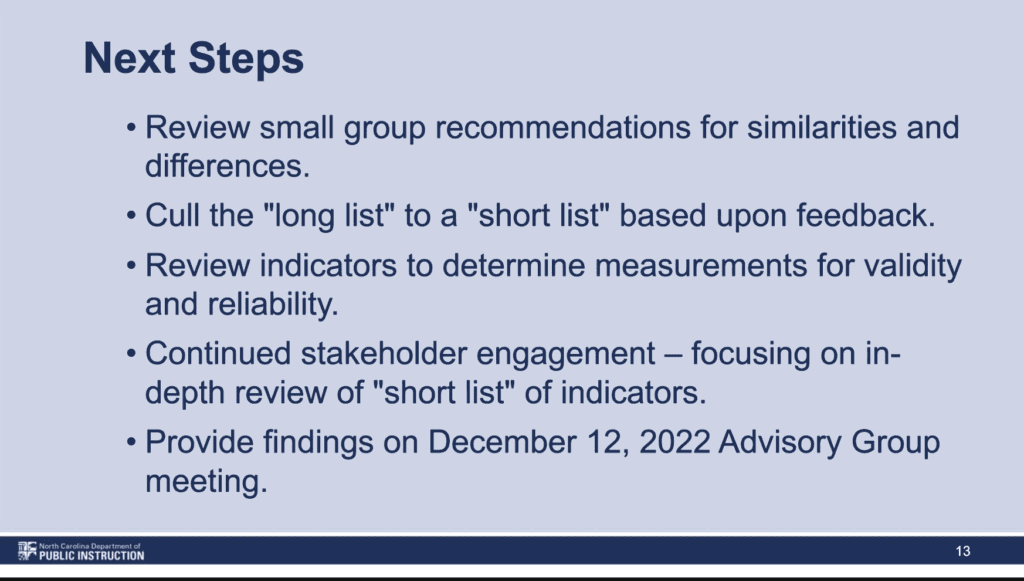

Andrew Smith, assistant superintendent of innovation at DPI, said that since the last meeting, DPI has talked about school performance grade redesign with the Governor’s Teacher Advisory Committee, met with a group of more than 100 curriculum leaders at the recent A.I.M. Conference, and got feedback from a group of charter leaders in the Charlotte metro area, among others.
Review of survey results
Monday’s session began with another review of some of the results from a survey put out in partnership between DPI and EdNC. DPI staff analyzed more than 4,500 of the responses to create charts showcasing the most frequently chosen indicators respondents thought were important in a new model. The charts below show those results:
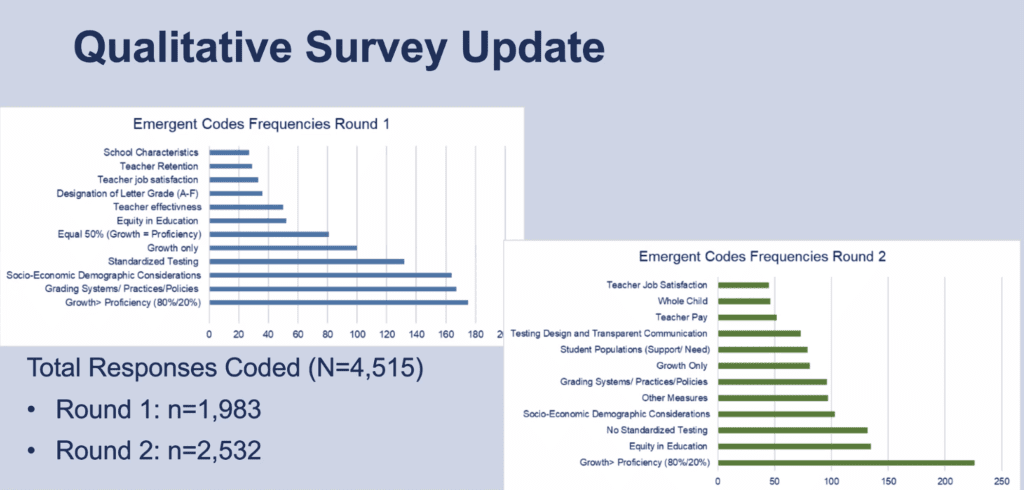

Advisory group survey
Jeni Corn, DPI’s director of research and evaluation, also took the group through the results of a survey of advisory group members on what indicators should be included in a new school performance grade system. She showed the group two bar charts that separated the results by academic and non-academic indicators. Those results are below:
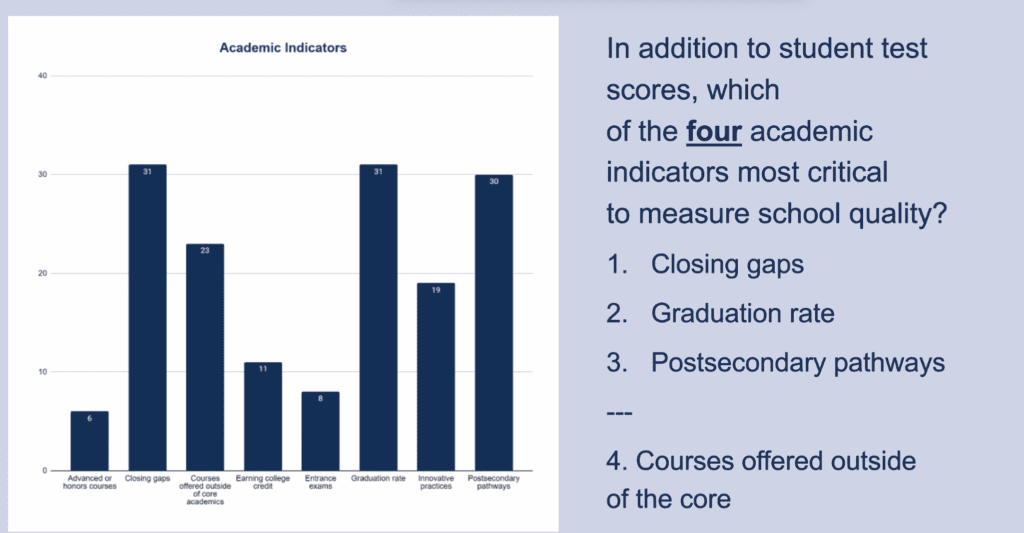

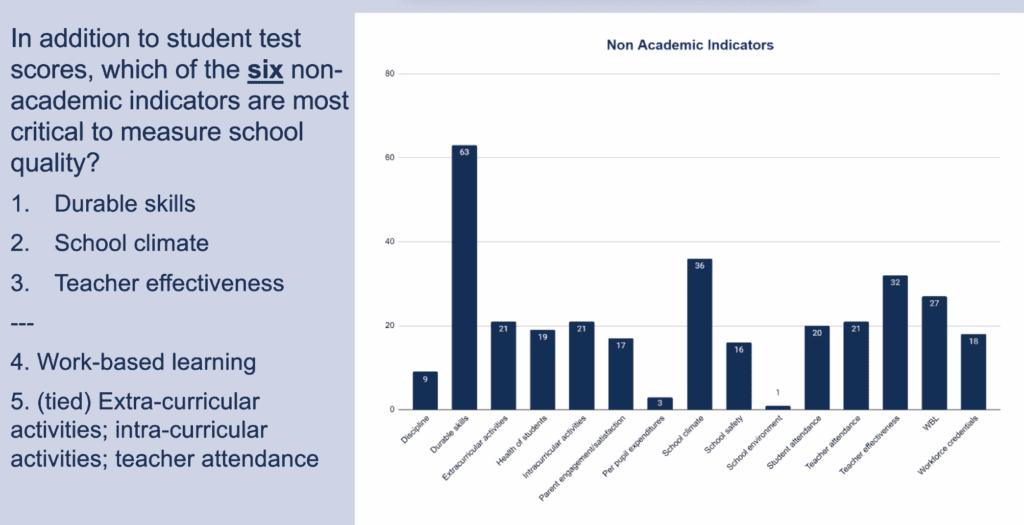

Later, Maher set up small-group discussions on the same topic by first talking about the breakdown of how school performance grade models could potentially be separated: by grade level — elementary, middle, and high schools — and by required and optional indicators.
Small group discussion share-out
The different small groups used virtual boards to do further work on which academic and nonacademic indicators they’d like to see, and then shared out the results with the larger group.
This is what the boards looked like before priorities began to be assigned in the small groups:
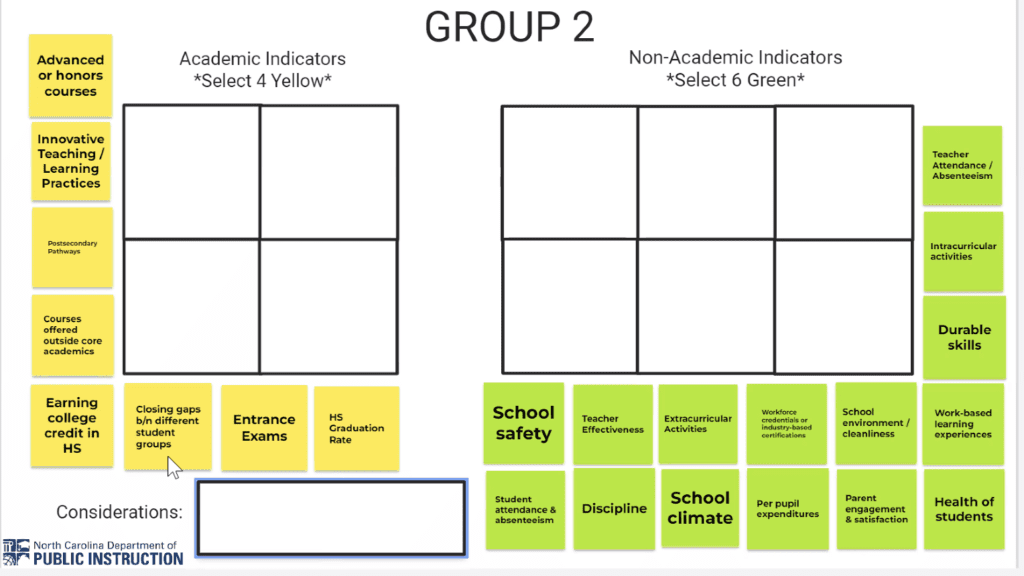

There were three groups reporting out, and you can see below the finished board for each group. Some groups put multiple indicators in one square because members thought they all expressed a similar sentiment.


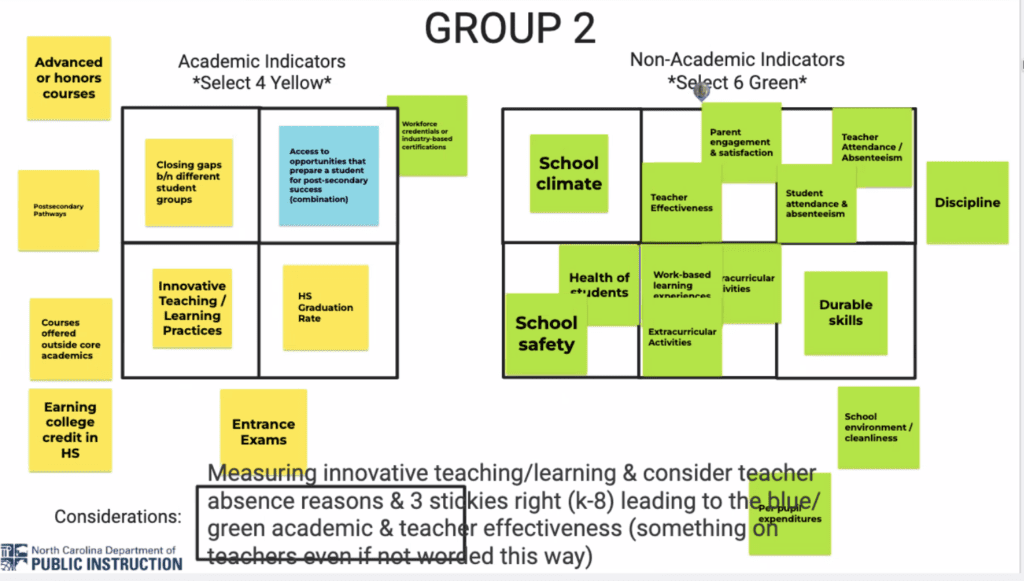

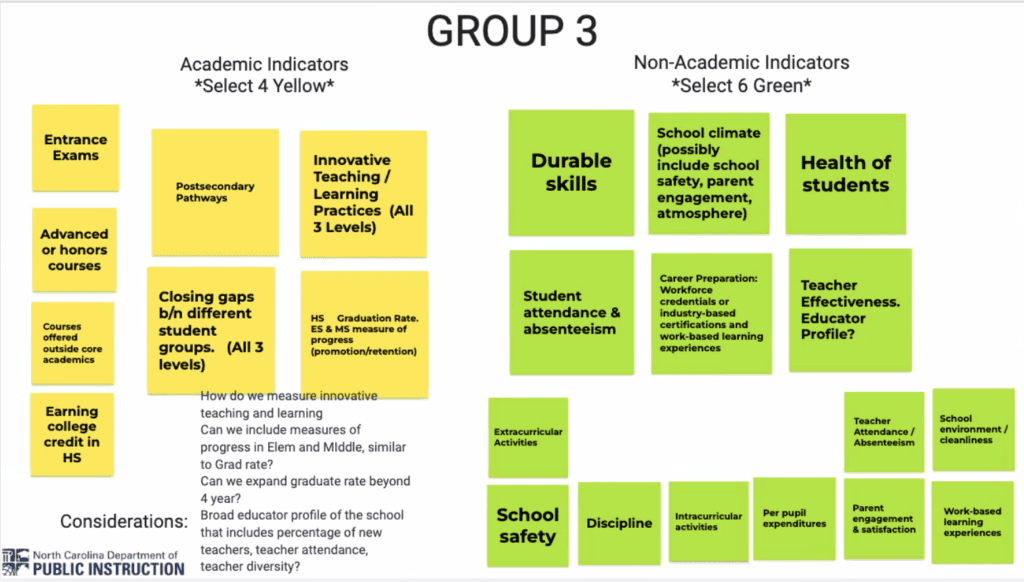

Maher said that he can see in the small-group conversations that consensus is starting to come together between advisory group members.
“I feel really heartened by this work today,” he said.
Testing
There was a brief conversation about testing between topics early in the meeting. Brenda Berg, president and CEO of BestNC, said she was worried about anti-testing sentiment.
“I do get very anxious when I continue to hear the idea that test scores don’t matter. We need data,” she said, adding later: “If we’re talking about what parents need to see, they need to see accurate academic data.”
Maher said the plan is to come up with a model that does include academic performance on tests, but said that everyone seems to be in agreement that the school performance grades should take more into account, a notion Berg agreed with.
State Superintendent of Public Instruction Catherine Truitt emphasized to the group that it is unable to discuss ending testing.
“I want to be very clear that any conversions about changing the test are not going to be a part of this conversation here,” she said, adding later: “This group does not have within its purview to talk about changing the test unless we are talking about moving to a nationally normed test or moving away from our North Carolina created test.”
Resources for your consideration
You can weigh in on the conversation about school performance grades.
Here is the current law, N.C. General Statute section 115C-83.15.
Here is EdNC’s survey data.
Here are EdNC’s maps that allow you to see how the school grades change across North Carolina as you change the current formula.
If you want to think about the purpose of school performance grades before thinking about what a new model might look like, this brief from Education Policy Initiative at Carolina (EPIC) is a good starting point.
And Education Commission of the States has a 50-state resource that details how other states approach school performance grades. Here you can see for each state the indicators they use and the weights they assign for elementary/middle school and high school. You can use this resource to imagine the model you would propose for schools across North Carolina.





